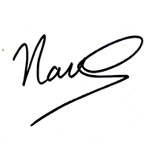“A good gulp of hot whisky at bedtime—it’s not very scientific, but it helps.”
– Alexander Fleming
The practice of medicine demands that a doctor give the best possible care without knowingly causing the patient harm. A physician is supposed to have the well-being of his or her patients as the paramount issue of his or her practice. This position in the doctor’s hierarchy of care is never supposed to be affected by money, fame, glory or power. Yet, as the following story illustrates, doctors are only human and are swayed by money.
Until about the early 1940s, alcohol-containing beverages were seen as having medicinal properties. As far back as in ancient China, Egypt, Greece and Rome, healers treated everything from snake bites to pain with booze. Alcohol was recognized for it’s antiseptic and analgesic properties. Even during the American Civil War, field medics used whiskey and brandy to treat pain when they ran out of opiates. At the beginning of the 20th century, whiskey was being used to treat delirium, anemia, dyspepsia and snake bites. A common adult dose was about 1 ounce every 2-3 hours. Child doses ranged from 1/2 to 2 teaspoons every three hour. In some cases, alcohol could comprise as much as 40% of a patient’s daily intake!
Even today, we still hear of remedies like
rubbing a teething infant’s gum with whisky or drinking hot beer to treat the common cold.
Around 1850, scientific medicine started emerging in the US. With that, the therapeutic benefit of alcoholic beverages started to be questioned. By the early part of the 20th century, this anti-alcohol-for-medicine movement had gained traction. It also coincided with the Prohibition movement.
In 1916 whiskey and brandy were removed from the list of scientifically approved medicines in The Pharmacopeia of the United States of America.
In June 1917, even as the 18th Amendment to ban alcohol was slowly working it’s way through Congress, the American Medical Association (the AMA) voted to denounce the use of alcohol for medical purposes.
The resolution read:
Whereas, We believe that the use of alcohol is detrimental to the human economy and,
Whereas, its use in therapeutics as a tonic or stimulant or for food has no scientific value; therefore,
Be it Resolved, That the American Medical Association is opposed to the use of alcohol as a beverage; and
Be it Further Resolved, That the use of alcohol as a therapeutic agent should be further discouraged.
In 1920, Congress passed the 18th Amendment and with the Volstead Act, Prohibition was ushered in. However, the law allowed the use of alcoholic beverages (beer, wines, whiskey and brandy) for medicinal purposes and for the Holy Sacrament. I guess the cultural use of alcohol as a drug was too strong.
The next few years saw the prescriptions of alcohol skyrocket. Using prescription pads obtained from the Treasury Department, doctors could sell patients prescriptions for a pint of whiskey every 10 days for $3 ($40 today). For $3 more, a pharmacist would then fill it.
In Chicago, a pharmacist named Charles Walgreen grew his chain of 20 stores in 1920 to 525 in 1930 through these prescriptions.
In 1922, five years after passage of it’s resolution to denounce the use of alcoholic beverages as medicine, the AMA did a national survey – the Referendum on the Use of Alcohol in the Medical Profession. The results were interesting:
From alcohol not having any scientific value as a therapeutic agent just 5 years earlier, now doctors reported using alcohol to treat as many as 27 ailments including diabetes, cancer, asthma, dyspepsia, lactation problems, tuberculosis, pneumonia, high blood pressure and problems old age!
A group of doctors would even lobby Congress and eventually bring the case before the Supreme Court to be allowed to prescribe as much alcohol as they wanted and not the measly 10 pints every 10 days. Even though the group claimed that their motivation was not money bu the issue of independent practice and non-interference by the federal government, one could not help but think of the AMA survey.
Eventually, Prohibition would be repealed through the 21st Amendment in 1933 and a decade later, the practice of prescribing whiskey and brandy for ailments would slowly die out.
As doctors, we are asked to help or do no harm. Yet when money is in play, I wonder how many of us succumb and do things that may harm patients. Like the patients of yesteryear, yearning for their pint of whiskey, I wonder how many of us take a swig out of that exhilarating bottle of power, fame and glory and forget what we are supposed to stand for. I hope we of today are doing much better than those back then.
